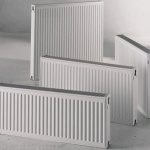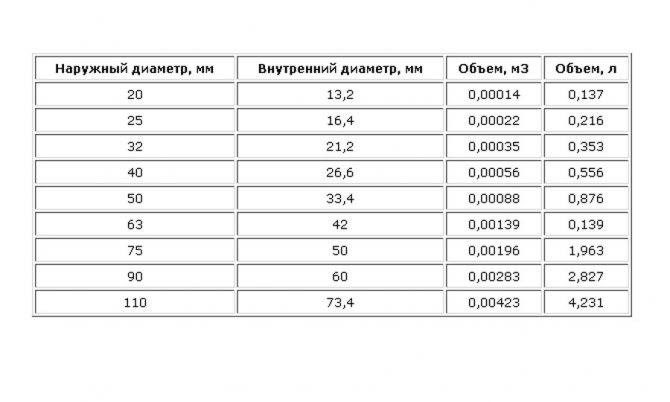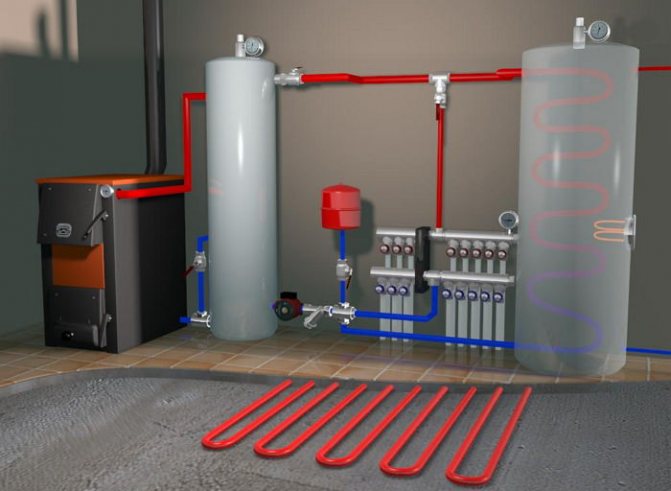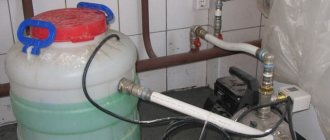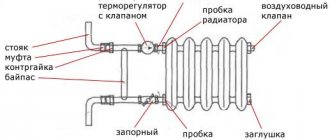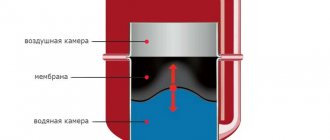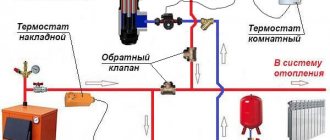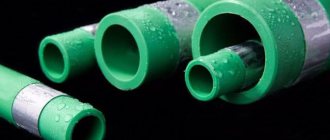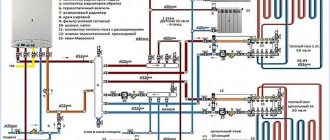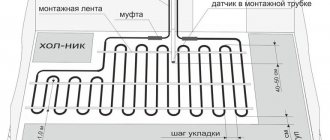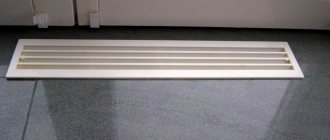In what cases is the volume of the coolant calculated?
The liquid in the water circuit of the heating system performs the most important function - it is the carrier of heat. Many elements of the heating system are selected in relation to the volume of the coolant to be distilled. Therefore, preliminary calculations will make it possible to complete the heat supply most efficiently. It is easy to calculate the total volume of the coolant, given that the amount of liquid in the radiators is 10-12 percent of the total amount of liquid to be distilled.
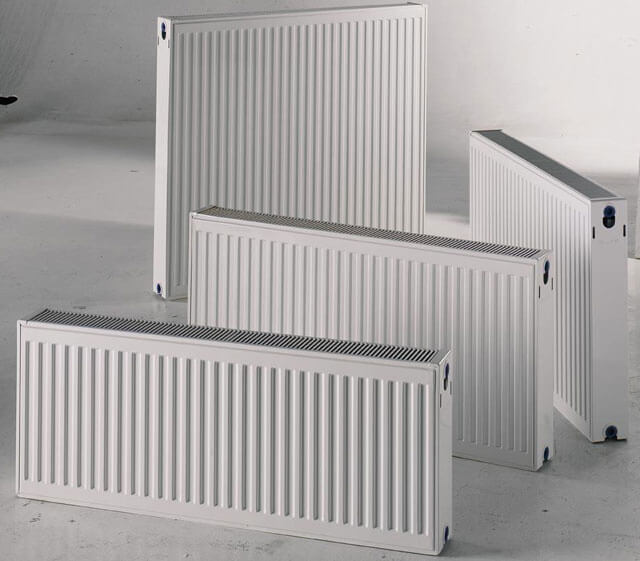
The calculation of water in the heating system must be done in the following cases:
- before installing the heating, determine the amount of coolant that will be distilled by a boiler of a certain power;
- when an anti-freezing liquid is poured into the system, it is necessary to maintain a certain proportion in relation to the entire distilled liquid;
- the size of the expansion tank depends on the amount of coolant;
- you need to know the required volume of water in the heating system of country or private houses, where the water supply is not centralized.
In addition, in order to properly mount the batteries on the wall, you need to know their weight. For example, just one section of a cast-iron radiator, already heavy, holds 1.5 liters of fluid. That is, the seven-section cast-iron battery becomes over ten kilograms heavier when the system starts up.
The easy way
There is another way to determine the volume of the coolant, which does not require the possession of any information. Everything is extremely simple. Close all the plugs on the battery and fill it with water using a measuring container. At the same time, naturally, you consider how much liquid has climbed.
At the end of the procedure, drain everything you typed from the radiator. Of course, all these operations must be performed either in the bathroom or in the yard, so as not to flood the house. Based on the obtained indicator, you can easily navigate by the total volume of the coolant for your heating system. Good luck!
What situations can be avoided if the volume of the coolant is correctly calculated
Many people do the installation of the heat of the system, relying on the advice of craftsmen, friends, or their own intuition. The boiler is chosen more powerful, the number of radiator sections is increased "just in case". And as a result, the opposite picture is obtained: instead of the expected heat, the batteries do not warm up evenly, the boiler "shakes" the fuel idle.
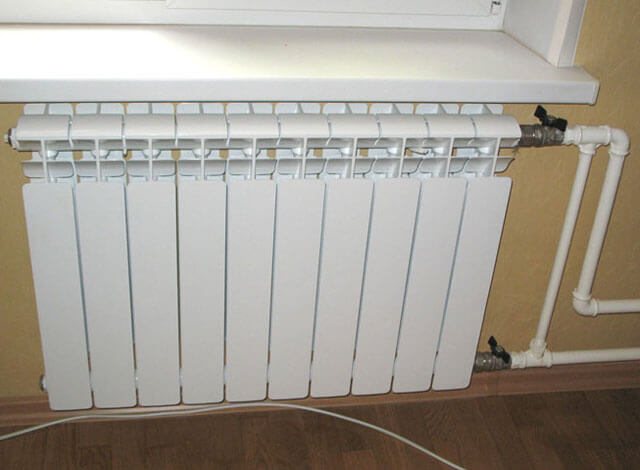

The following unpleasant situations can be avoided if you know how to calculate the amount of water in the heating system:
- uneven heating of the water circuit in the rooms;
- increased fuel consumption;
- emergency situations (breaks in connections, leaks in radiators).
All these "surprises" are quite predictable in case of incorrect calculation of the volume of the coolant.
Attention! Antifreeze must not be used for heating systems that use galvanized pipes or other elements.
Calculator for calculating the total volume of the heating system
Sometimes the owners of houses or apartments in which autonomous water heating is installed, there is a need to accurately determine the total volume of the system. Most often this is due to the need to carry out certain preventive and routine maintenance, during which it will be necessary to completely empty the system, and then fill it with a new coolant. When using ordinary water, this may not be so important (although it is desirable to properly prepare it for such a "mission"), but when a special coolant is purchased, which can be expensive, you cannot do without knowing the volume to plan a purchase.
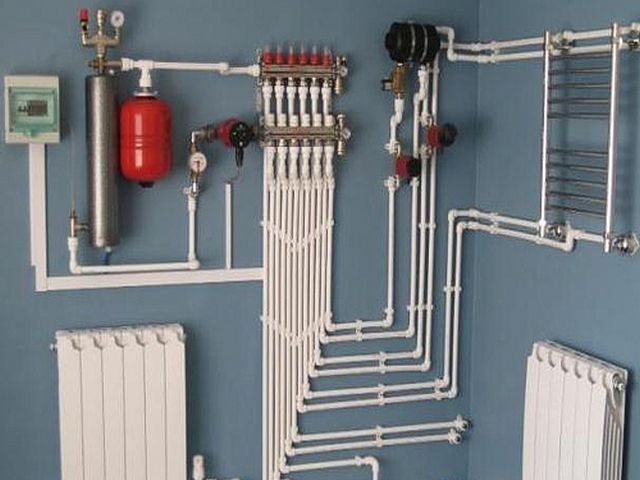

Calculator for calculating the total volume of the heating system
Information about the volume of the heating system is sometimes needed for other needs. So, for example, this value is required without fail for the correct selection of the expansion tank. Some calculations carried out during the modernization of the system and the replacement of one or another equipment may also require this value to be substituted into the heat engineering formulas. In a word, knowing such a parameter will never be superfluous. And the calculator for calculating the total volume of the heating system located below will help to determine with it.
Expansion tank prices
In the course of the calculation, ambiguities may arise - for this case, the necessary explanations are placed below the calculator.
Calculator for calculating the total volume of the heating system
Explanations on making calculations
So, if there is no way to measure the volume of the heating system experimentally (for example, by carefully filling it from the water supply system, with a notch of the water flow meter readings), then you will have to carry out mathematical calculations. They boil down to the fact that the summation of the volumes of all devices and pipe circuits installed in the system is carried out. Some of the values should already be known, the rest can be calculated using the geometric formulas of the volume.
- The volume of the boiler heat exchanger - this value is always found in the technical documentation of any model.
- Expansion tank volume. He, too, must be known to the owners. The fact that any tank should never be filled to the top is taken into account in the calculator program.
By the way, sometimes it is required to solve a slightly different problem - to find out the volume of the system without an expansion tank, precisely for its correct selection. In this case, the slider "volume of the expansion tank" must be set to "0", and the resulting final value will become the starting point for choosing the optimal model.
How is the expansion tank calculated?
This is an indispensable element of the heating system, which must fully comply with its parameters. How to calculate the required volume of a diaphragm expansion tank - read in the publication dedicated to the creation closed heating systems .
- The next position is the volume of installed heat exchange devices. For collapsible batteries, you can specify the number of sections and their type - the volume of the most common radiators has already been entered into the calculation program. If the radiators or convectors are non-separable, then their capacity is indicated according to the passport and, accordingly, the number of devices.
If heated floors are installed in the house, then the calculation will be made according to the total length of the circuits and the type of pipes used for this. The program database contains the necessary parameters for contours made of metal-plastic pipes and for unreinforced PEX - made of cross-linked polyethylene.
- A significant part of the total volume of the heating system always falls on the circuits - supply and return pipes. It is characteristic that during installation, various types are often used, not only in terms of the outer diameter, but also in terms of the material of manufacture. And since the inner diameters of different types can differ significantly (due to the different wall thickness with equal outer diameters), this also affects the volumes.
This is taken into account in the calculation algorithm. It is only necessary to measure in advance the length of the sections of each type of pipe, and then indicate them in the corresponding fields for entering the data of the calculator. For example, the system uses VGP steel pipes. We note in the calculator that yes, they are available - and a group of sliders appears, in which it remains only to enter the length of the sections for each of their existing standard diameters. If there is no diameter in the system, then the default length value is left, that is, "0".
In the same way, data entry and volume counting is organized for other types - metal-plastic and reinforced polypropylene pipes.
- In the heating system, other devices can also be mounted that contain a certain volume of the coolant - these are factory-made collectors, buffer tanks (heat accumulators), boilers, hydraulic dividers. If there is such equipment, then it is enough to select the appropriate item in the calculator, so that an additional window appears for entering the passport value of the volume of the device (one, or several at once - in total).
The calculator will show the final value in liters.
What can be taken from the documentation
Technical data sheets for devices, if any, will help you find out how much water in the heating battery and the boiler will circulate during the operation of the heat supply system.
If you need to choose a radiator by the volume of the coolant, you can compare different options:
- aluminum and bimetallic with a height of 300 and 500 mm, respectively, accommodate 0.3 and 0.39 l / m;
- cast iron MS-140 with a height of 300 and 500 mm. holds respectively 3 and 4 l / m;
- an imported cast-iron radiator with a height of 300 and 500 mm will include 0.5 and 0.6 l / m.
Thus, the volume of a bimetallic radiator is the same as that of an aluminum one.
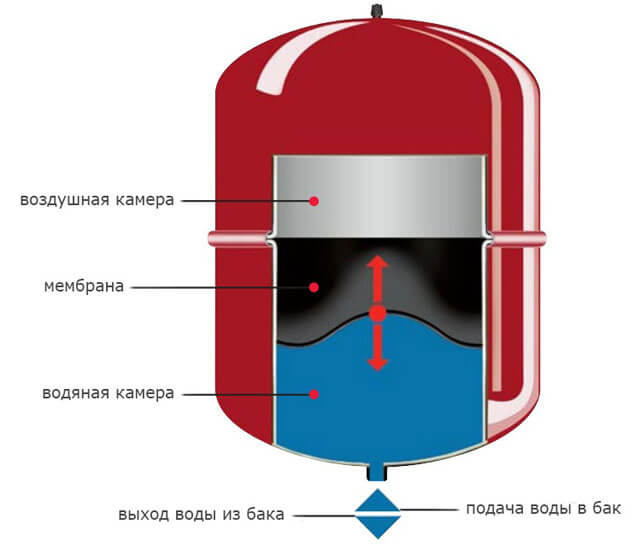

Another "cheat sheet" will help with the selection of cast iron radiators of different models (the amount of coolant per section is indicated):
- MS 140 - 1.11-1.45 l
- World Cup 1 - 0.66-0.9 l s;
- World Cup 2 - 0.7-0.95 l;
- World Cup 3 - 0.155-0.246 liters;
For pipes, the calculations are as follows.
Based on the internal diameter of the pipes, in the documentation you can find out the amount of liquid that they hold per running meter:
- 13.2 mm - 0.137 L;
- 16.4 mm - 0.216 L;
- 21.2 mm - 0.353 L;
- 26.6 mm - 0.556 l;
- 42 mm - 0.139 l;
- 50 mm - 0.876 l.
The calculations are simple. So, for example, 4.4 liters of water will fit in a 5-meter pipe with an inner diameter of 50 mm: 5x0.876 = 4.4
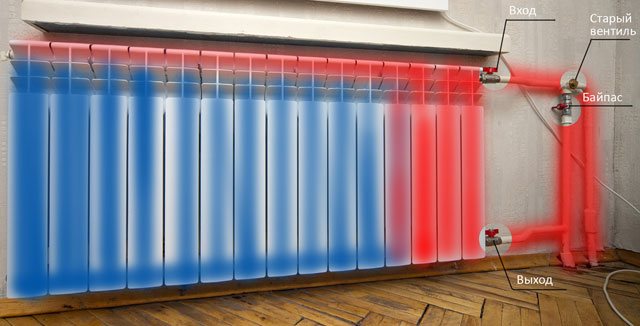

Attention! If you compare how many liters of water are in heating radiators of different models, you can choose the appropriate option corresponding to the boiler power.
What is the formula for the calculation
To get accurate data, you need to prepare:
First, the radius is measured, indicated by the letter R. It can be:
The first allows you to calculate how much liquid can fit in the cylinder, that is, the internal volume of the pipe, its cubic capacity.
The outer radius is needed to determine the size of the space that it will take.
For the calculation, you need to know the data of the pipe diameter. It is designated by the letter D and is calculated by the formula R x 2. The circumference is also determined. It is designated by the letter L.
To calculate the volume of a pipe measured in cubic meters (m3), you must first calculate its area.
To obtain an accurate value, you first need to calculate the cross-sectional area. To do this, apply the formula:
- S = R x Pi.
- The area you are looking for - S;
- Pipe radius - R;
- Pi number - 3.14159265.
The resulting value must be multiplied by the length of the pipeline.
How to find the volume of a pipe using the formula? You need to know only 2 values. The calculation formula itself is as follows:
- V = S x L
- Pipe volume - V;
- Sectional area - S;
- Length - L
For example, we have a metal pipe with a diameter of 0.5 meters and a length of two meters. To carry out the calculation, the size of the outer cross member of stainless metal is inserted into the formula for calculating the area of a circle. The pipe area will be equal to;
S = (D / 2) = 3.14 x (0.5 / 2) = 0.0625 sq. meters.
The final calculation formula will take the following form:
V = HS = 2 x 0.0625 = 0.125 cc meters.
This formula calculates the volume of absolutely any pipe. And it is absolutely not important what material it is from. If the pipeline has many components, using this formula, you can calculate separately the volume of each section.
When performing a calculation, it is very important that the dimensions are expressed in the same units of measurement. The easiest way to calculate is if all values are converted to square centimeters.
If you use different units of measurement, you can get very questionable results. They will be very far from their real values.When performing constant daily calculations, you can use the calculator's memory by setting a constant value. For example, pi times two. This will help to calculate the volume of pipes of different diameters much faster.
Today, for the calculation, you can use ready-made computer programs, in which standard parameters are indicated in advance. To perform the calculation, you only need to enter additional variable values.
Download the program https://yadi.sk/d/_1ZA9Mmf3AJKXy
How to calculate the amount of coolant in radiators yourself
Sometimes you have to face the situation that it is impossible to determine the belonging of the radiators to a particular model. Radiator documents may be lost, model name is not visible. There is an easy way to find out how many liters are in a heating radiator without resorting to documentation or tables from the Internet.
Proceed as follows:
- close one side of the radiator with a plug;
- pour the liquid to the top;
- pour the liquid into a measuring container.
Attention! There are two options for calculating the volume of water in a heating radiator: immediately note the amount of liquid poured in, or after draining it.
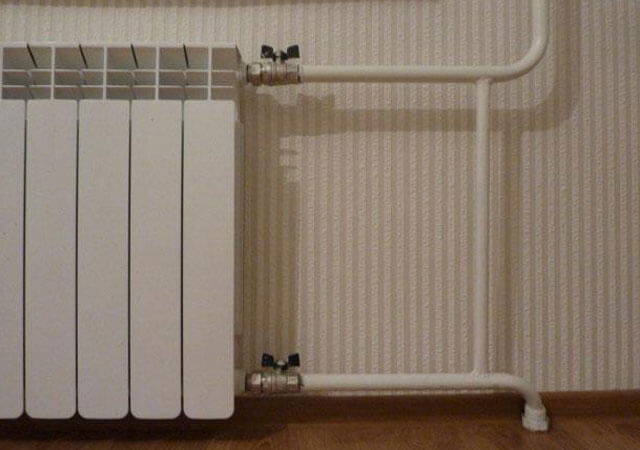

In such a simple way, you can calculate the amount of liquid that enters a radiator of any complexity or model.
The critical stage: calculating the capacity of the expansion tank
In order to have a clear idea of the displacement of the entire heat system, you need to know how much water is placed in the boiler heat exchanger.
You can take the average. So, an average of 3-6 liters of water is included in a wall-mounted heating boiler, and 10-30 liters in a floor or parapet boiler.
Now you can calculate the capacity of the expansion tank, which performs an important function. It compensates for the excess pressure that occurs when the heat carrier expands during heating.
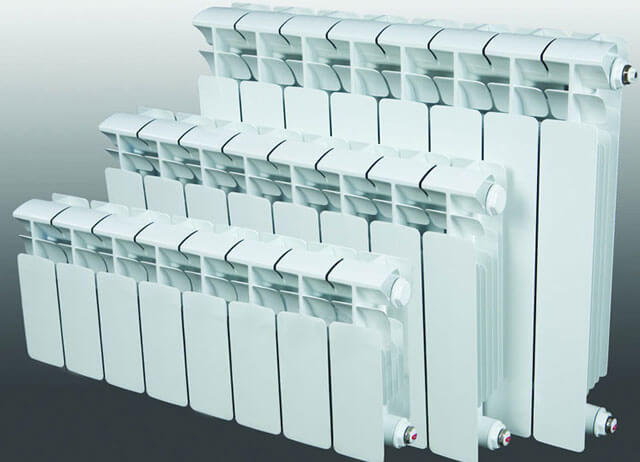

Depending on the type of heating system, tanks are:
- closed;
- open.
For small rooms, the open type is suitable, but in large two-story cottages, closed expansion joints (membrane) are increasingly being installed.
If the capacity of the tank is less than required, the valve will release pressure too often. In this case, you have to change it, or put an additional tank in parallel.
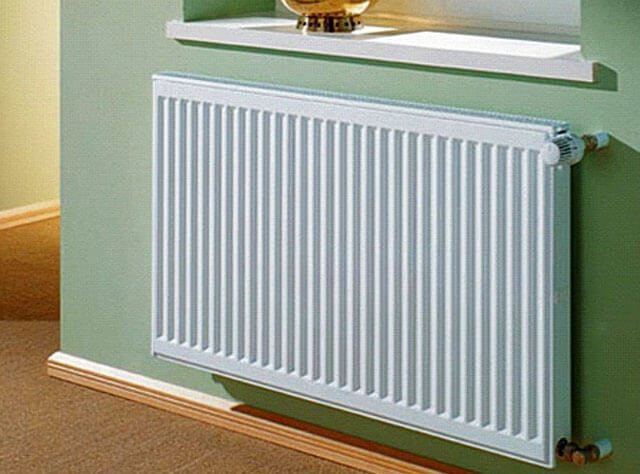

For the formula for calculating the capacity of the expansion tank, the following indicators are needed:
- V (c) is the volume of the coolant in the system;
- K is the coefficient of expansion of water (a value of 1.04 is taken, in terms of expansion of water at 4%);
- D is the expansion efficiency of the reservoir, which is calculated by the formula: (Pmax - Pb) / (Pmax + 1) = D, where Pmax is the maximum allowable pressure in the system, and Pb is the pre-pumping pressure of the expansion joint air chamber (parameters are specified in the documentation for the reservoir );
- V (b) - capacity of the expansion tank.
So, (V (c) x K) / D = V (b)
Why is the radiator volume important?
Calculating how many liters are in one section of an aluminum radiator is important for several reasons:
- When the device is mounted on wall brackets, it is necessary to provide not only its weight, but also the heat carrier inside. It is easy to calculate how much water weighs by checking the data sheet of the product. If it states that the volume, for example, of a section of an aluminum radiator with a center-to-center distance of 500 is 0.27 l, then 270 ml of water is placed in it.
- Knowing the volume of the battery will allow you to select a boiler of the required power. This is especially important when the coolant is antifreeze. Having a sufficiently high viscosity, it needs a good "pusher", otherwise the slow advance of the carrier through the system will make its work ineffective.
- The choice of an expansion tank, on which many consumers save when installing aluminum batteries, also depends on the amount of coolant in the heating system. He takes over any pressure drops, which "saves lives", both heaters and pipes.As the water heats up, it increases in volume by 4%, and if you do not provide it with additional space for this, then the rupture of the integrity of the system is only a matter of time.
- The way the coolant flows through the network sometimes depends on the volume of the radiator. For example, batteries with a large capacity are well suited for natural circulation.

